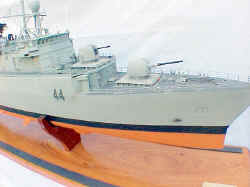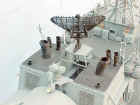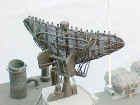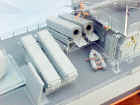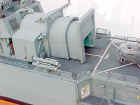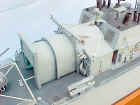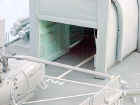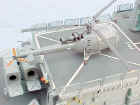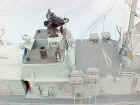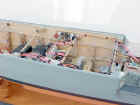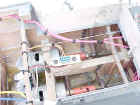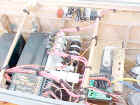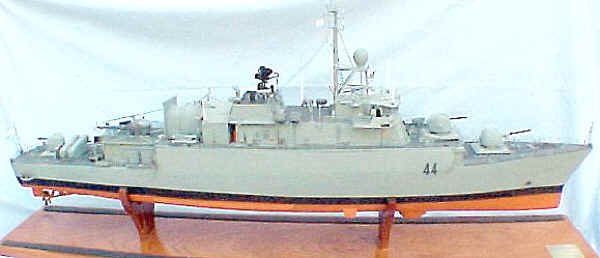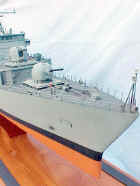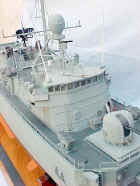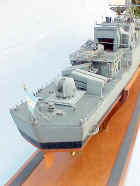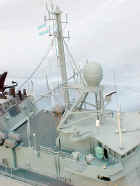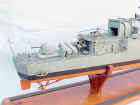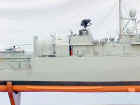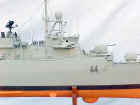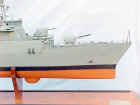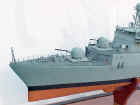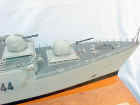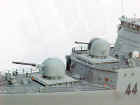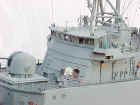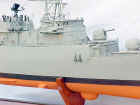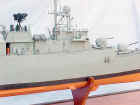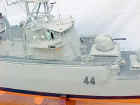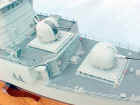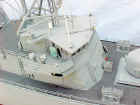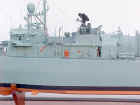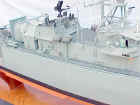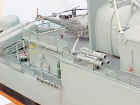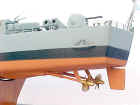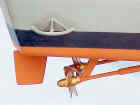 |
|||||||||||||||||||||||||||||
|
Ships |
|||||||||||||||||||||||||||||
|
Argentine Navy Corvette Type MEKO 140 A16 A.R.A. Parker 1/72 scale |
|||||||||||||||||||||||||||||
|
by Carlos Votta |
|||||||||||||||||||||||||||||
|
The history of this ship is quite short. It begins in the Blohm and Voss shipyards, in Germany, a company from the Thyssen-Krupp group. In view of the great experience acquired during their long time as ship builders, they wanted to optimize the idea of building a ship with the capability of keeping her updated with the most current technology, as it arises. When we speak of a modern warship, it means that the hull and the general structure must be built to outclass the life of its weapons and electronic systems. There comes the idea of building the whole vessel in independent "modules" for the guns, the machine guns, missiles, radar equipment, and so on, in order for the ship to be modified, from a basic configuration, with the addition on different modules, depending on the specific application given to it. The design of the corvettes built for the Argentinean Republic, according to the specifications given by the Armada, were equipped with a 76mm Otto Melara automatic gun, and two 40mm Breda-Bofors double machine guns, using the above mentioned modular system; as well as electronic radar search technology for surface and air-surface navigation, and aim-and-shooting control, plus an active/passive sonar system for underwater searching. All that weaponry was complemented with the addition of two triple anti-sub torpedo launching systems. The main attack system comprises four Aerospatiale Exocet MM38 missile launchers mounted at the stern of the ship. Besides the launchers, the ARA Parker has a telescopic hangar made in Canada installed in the top stern deck, in order to receive small helicopters of the Alouette 3, or Fenec type, used specifically for the antisubmarine fight. The unit started its service in the Armada Argentina on April 1990, bearing the number 44. It has participated in practice operations with ships from other countries, and now is engaged in the patrolling of our territorial seas.
The Model
The first step was to get the plans for the ship; after that, I started making the bulkheads out of 3/8" (10mm) plywood, and covered the structure with 3/16" balsa wood planking in order to make the hull.
I puttied and sanded the hull, preparing it for the painting, with several coats of clear epoxy varnish (thinned with isopropyl alcohol) as a base. Then, I put on the several coats of automotive gray lacquer primer; after that I applied the final coats. For that purpose I used Testor's FS35237 (medium gray), which resembles very much the naval gray color, for the hull, and Testor's N° 100 (oxide red) for the underwater line, which is very adequate too. These two colors were separated by a thin black colored line.
Superstructure
All the work was done following the ship's diagrams, as well as the great amount of pictures I had the chance to take during several visits to the shipyard, on board, and in the docks, during the fleet exhibition periods. * (1)
I detailed the command bridge interior and the collapsible hangar, as well as all the accessories, lifeboats, and elements in the deck. I used the "dry brush" technique with flat black in the smokestack zone, and brown, orange, and dark blue, to simulate rust and wear. For the above job, I used "Model Master" paints.
Most of the times these ships are kept in pristine conditions, so I was very careful not to overdo when weatherizing the "traffic" zones in the decks. I painted the main deck "anti skid" zones in a darker gray and used a "blending" technique, with very subtle oxide colors, in the anchor zone. For the handmade ventilation grills all over the ship, I used the basic gray tone and "weatherized" them with flat black, in order to increase the depth effect.
Detailing
The radar antenna was built with bronze wire and ABS plastic. By the way, the antenna is operational through a R/C device. The missile containers are wood made while the central launching tube is made with brass tubing, and the covers and reinforcing parts made out of ABS plastic. In fact, you can "launch" the missiles by means of an electrical device; it has four "loads" specially made by me for this purpose.
The main mast, with all the antennas, was made out of wire in different diameters. For the navigation lights and the towers for the cannon and the machine guns, I hand carved them in wood, then I made an epoxy mold in order to make all the parts exactly alike.
Conclusion
Information sources (1) In this MMS issue, we reproduce a part of this graphic material.
|
|||||||||||||||||||||||||||||
